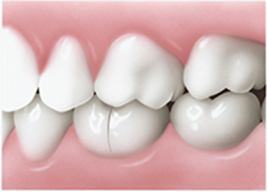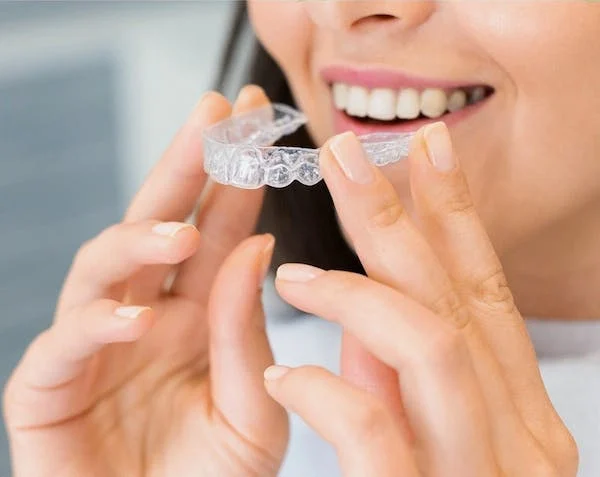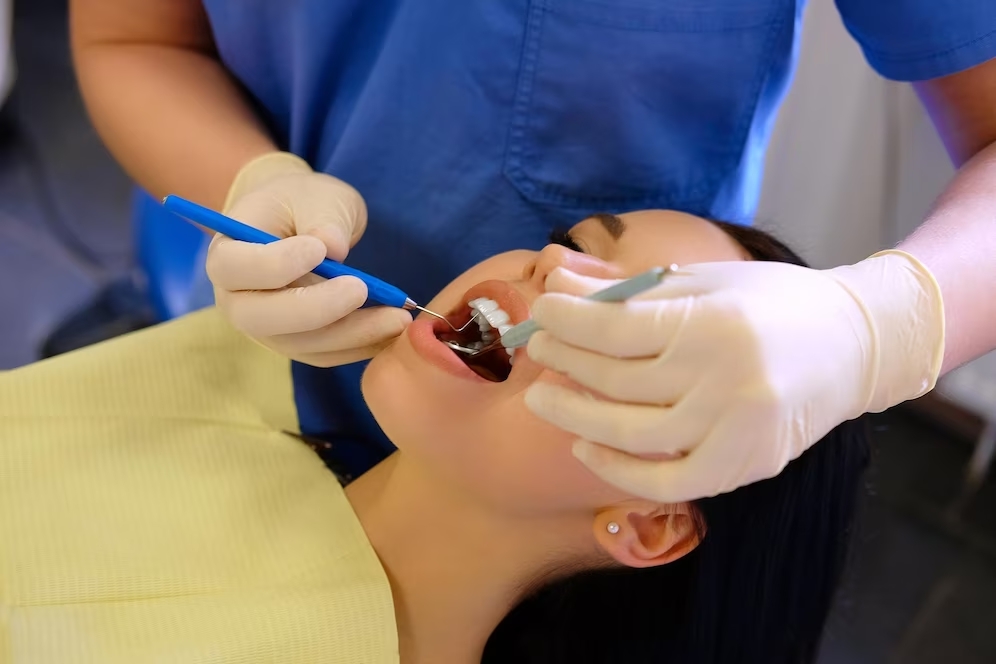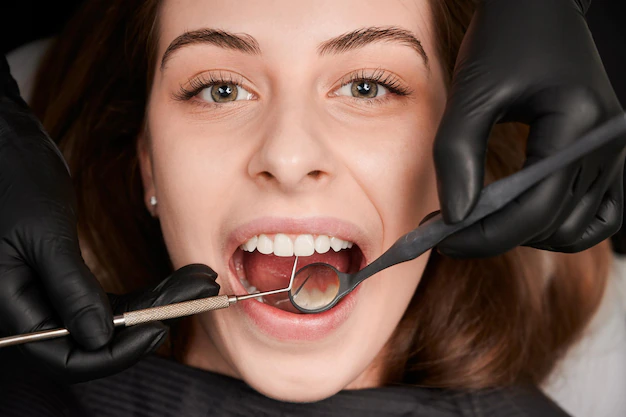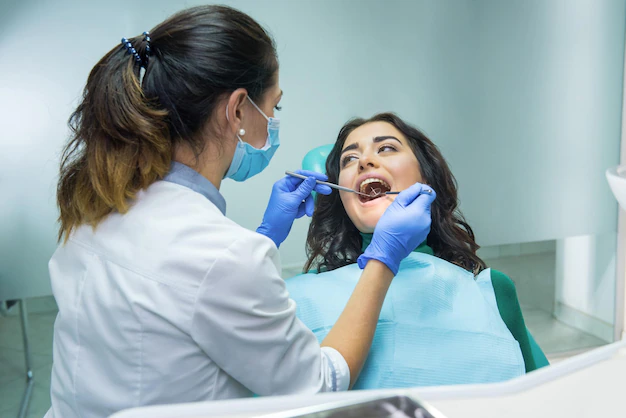Are you experiencing discomfort when biting or chewing? Do your teeth feel sensitive to hot or cold temperatures? If so, you may be one of the many people suffering from cracked teeth. Cracks in teeth can cause a variety of unpleasant symptoms and can even lead to tooth loss if left untreated. But don’t worry – there are steps you can take to prevent these cracks from occurring in the first place! In this blog post, we’ll explore five common causes of cracked teeth and provide tips on how to keep your pearly whites strong and healthy. So sit back, relax, and let’s dive into the world of dental health!
Causes Of Cracked Teeth
Cracked teeth are a common dental problem that can cause discomfort, and pain, and even lead to tooth loss. There are several causes of broken teeth, including:
1. Teeth Grinding Or Clenching:
Habits like grinding or clenching your teeth can put excessive pressure on them which may cause cracks over time.
2. Chewing Hard Foods:
Biting down on hard candies, ice cubes or other hard objects can also crack your teeth.
3. Trauma To The Mouth:
Accidents during contact sports or any other physical activity involving the face and mouth area could result in cracking a tooth.
4. Age-Related Wear And Tear:
As we age our teeth tend to weaken; this coupled with years of chewing and biting increases one’s risk of developing cracked teeth.
5. Large Fillings:
Large fillings in molars especially if they have been there for long may increase the likelihood of cracking due to weakening of surrounding enamel over time.
Therefore it is important to take precautions by wearing protective gear when engaging in contact sports, avoiding bad habits such as nail-biting and pencil-chewing, using dental guards at night if you grind your teeth as well as visiting the dentist regularly who will check for signs of weakened tooth structure before serious damage occurs.
How To Prevent Cracked Teeth
Preventing cracked teeth is easier than you might think. Here are some tips to protect your pearly whites:
1. Wear A Mouthguard:
If you play sports or grind your teeth at night, a custom-fitted mouthguard can help prevent cracks and other dental injuries.
2. Avoid Hard Foods:
Chewing on ice, popcorn kernels, and hard candy may be tempting, but it can cause serious damage to your teeth over time.
3. Don’t Use Your Teeth As Tools:
Using your teeth to open packages or bottles puts unnecessary stress on them and increases the risk of cracking.
4. Maintain Good Oral Hygiene:
Brushing twice daily with fluoride toothpaste and flossing once a day helps keep your teeth strong by removing harmful bacteria that can weaken enamel.
5. Get Regular Dental Check-Ups:
Your dentist can identify any early signs of cracks or other dental issues before they become more serious problems.
By following these simple tips, you’ll be well on the way to keeping those pearly whites healthy and crack-free!
Tips For Cleaning Your Teeth
Keeping your teeth clean is essential in order to prevent a wide range of dental problems, including cracked teeth. Here are some tips for cleaning your teeth that can help you maintain healthy and strong teeth.
- Firstly, brush your teeth twice a day with fluoride toothpaste. Make sure to brush gently in circular motions and cover all surfaces of your teeth, including the fronts, backs, and tops. Additionally, don’t forget to brush your tongue as well – it helps remove bacteria that cause bad breath!
- Secondly, floss regularly at least once a day in order to remove food particles from between your teeth. If you find traditional flossing difficult or painful due to crowded or sensitive gums, consider using alternative products like water flossers or interdental brushes.
- Thirdly, limit sugary foods and drinks which can lead to tooth decay and weakened enamel over time. Instead, choose whole foods such as fruits and vegetables which promote saliva production – helping wash away harmful bacteria naturally.
- Lastly, Dental checkups every six months are important not only for maintaining good oral hygiene but also identifying potential issues early on before they become major concerns requiring more invasive treatment procedures
By following these simple tips consistently on a daily basis you’ll be able to keep your mouth healthy while reducing the likelihood of developing any cracks!
Tips For Brushing And Flossing Your Teeth
Brushing and flossing your teeth regularly is essential to maintain good oral health. However, many people don’t brush or floss properly, which can lead to various dental problems, including cracked teeth. Here are some tips for brushing and flossing your teeth effectively.
Firstly, use the right toothbrush. Choose a toothbrush with soft bristles that can reach all areas of your mouth easily. Brush at least twice daily using a fluoride toothpaste for at least two minutes each time.
When brushing, make sure you cover all surfaces of your teeth – front, back, and chewing surfaces. Use circular motions while gently applying pressure to avoid damaging your gums.
In addition to brushing, it’s important to floss daily. Flossing helps remove food particles and plaque from between your teeth which a brush cannot reach. Use about 18 inches of dental floss wound around both index fingers and slide it gently between each tooth in a zigzag motion.
Don’t forget to clean along the gum line when brushing and flossing as this area is prone to bacteria buildup that can cause gum disease.
Rinse thoroughly after brushing or flossing with water or mouthwash to help remove any remaining debris from your mouth.
Following these simple tips consistently every day will ensure effective cleaning of one’s oral health leading to better overall health keeping oneself away from possible cracking issues on their precious set of pearly whites!
The Bottom Line
Taking care of our teeth is essential for maintaining good oral health. Cracked teeth are a common problem that can lead to pain, discomfort, and even tooth loss if left untreated. However, with proper care and attention, you can prevent cracked teeth from developing in the first place.

